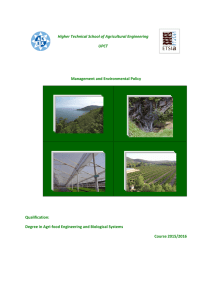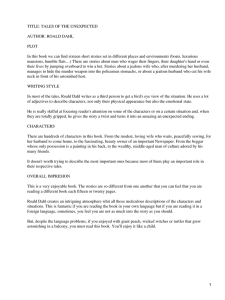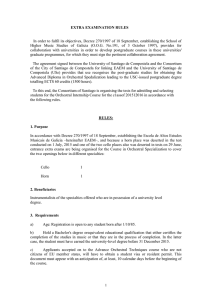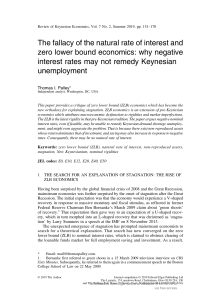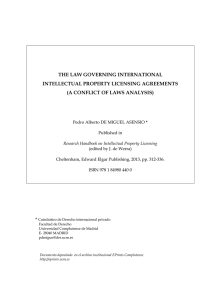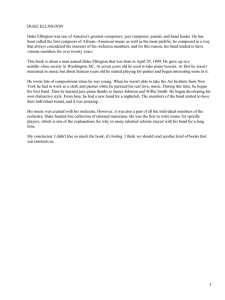Edward Elgar, Serenade for strings in E minor, Op. 20
Anuncio
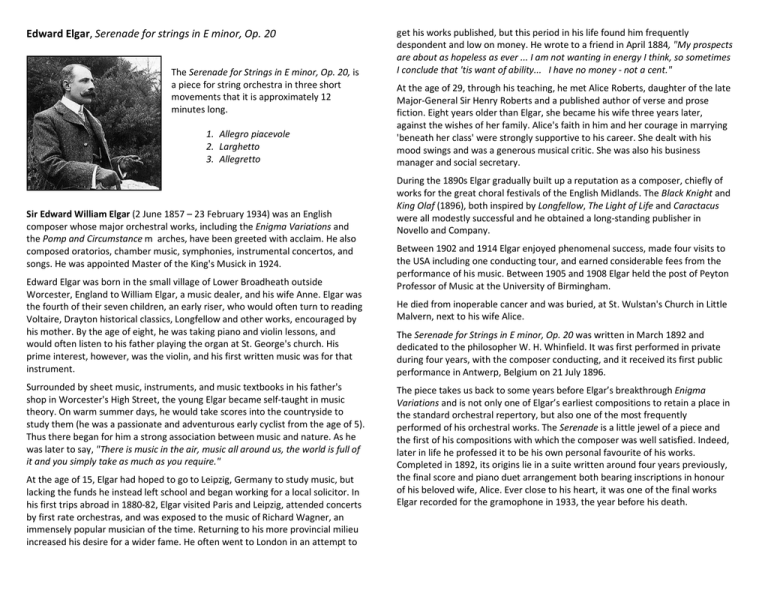
Edward Elgar, Serenade for strings in E minor, Op. 20 The Serenade for Strings in E minor, Op. 20, is a piece for string orchestra in three short movements that it is approximately 12 minutes long. 1. Allegro piacevole 2. Larghetto 3. Allegretto Sir Edward William Elgar (2 June 1857 – 23 February 1934) was an English composer whose major orchestral works, including the Enigma Variations and the Pomp and Circumstance m arches, have been greeted with acclaim. He also composed oratorios, chamber music, symphonies, instrumental concertos, and songs. He was appointed Master of the King's Musick in 1924. Edward Elgar was born in the small village of Lower Broadheath outside Worcester, England to William Elgar, a music dealer, and his wife Anne. Elgar was the fourth of their seven children, an early riser, who would often turn to reading Voltaire, Drayton historical classics, Longfellow and other works, encouraged by his mother. By the age of eight, he was taking piano and violin lessons, and would often listen to his father playing the organ at St. George's church. His prime interest, however, was the violin, and his first written music was for that instrument. Surrounded by sheet music, instruments, and music textbooks in his father's shop in Worcester's High Street, the young Elgar became self-taught in music theory. On warm summer days, he would take scores into the countryside to study them (he was a passionate and adventurous early cyclist from the age of 5). Thus there began for him a strong association between music and nature. As he was later to say, "There is music in the air, music all around us, the world is full of it and you simply take as much as you require." At the age of 15, Elgar had hoped to go to Leipzig, Germany to study music, but lacking the funds he instead left school and began working for a local solicitor. In his first trips abroad in 1880-82, Elgar visited Paris and Leipzig, attended concerts by first rate orchestras, and was exposed to the music of Richard Wagner, an immensely popular musician of the time. Returning to his more provincial milieu increased his desire for a wider fame. He often went to London in an attempt to get his works published, but this period in his life found him frequently despondent and low on money. He wrote to a friend in April 1884, "My prospects are about as hopeless as ever ... I am not wanting in energy I think, so sometimes I conclude that 'tis want of ability... I have no money - not a cent." At the age of 29, through his teaching, he met Alice Roberts, daughter of the late Major-General Sir Henry Roberts and a published author of verse and prose fiction. Eight years older than Elgar, she became his wife three years later, against the wishes of her family. Alice's faith in him and her courage in marrying 'beneath her class' were strongly supportive to his career. She dealt with his mood swings and was a generous musical critic. She was also his business manager and social secretary. During the 1890s Elgar gradually built up a reputation as a composer, chiefly of works for the great choral festivals of the English Midlands. The Black Knight and King Olaf (1896), both inspired by Longfellow, The Light of Life and Caractacus were all modestly successful and he obtained a long-standing publisher in Novello and Company. Between 1902 and 1914 Elgar enjoyed phenomenal success, made four visits to the USA including one conducting tour, and earned considerable fees from the performance of his music. Between 1905 and 1908 Elgar held the post of Peyton Professor of Music at the University of Birmingham. He died from inoperable cancer and was buried, at St. Wulstan's Church in Little Malvern, next to his wife Alice. The Serenade for Strings in E minor, Op. 20 was written in March 1892 and dedicated to the philosopher W. H. Whinfield. It was first performed in private during four years, with the composer conducting, and it received its first public performance in Antwerp, Belgium on 21 July 1896. The piece takes us back to some years before Elgar’s breakthrough Enigma Variations and is not only one of Elgar’s earliest compositions to retain a place in the standard orchestral repertory, but also one of the most frequently performed of his orchestral works. The Serenade is a little jewel of a piece and the first of his compositions with which the composer was well satisfied. Indeed, later in life he professed it to be his own personal favourite of his works. Completed in 1892, its origins lie in a suite written around four years previously, the final score and piano duet arrangement both bearing inscriptions in honour of his beloved wife, Alice. Ever close to his heart, it was one of the final works Elgar recorded for the gramophone in 1933, the year before his death.
